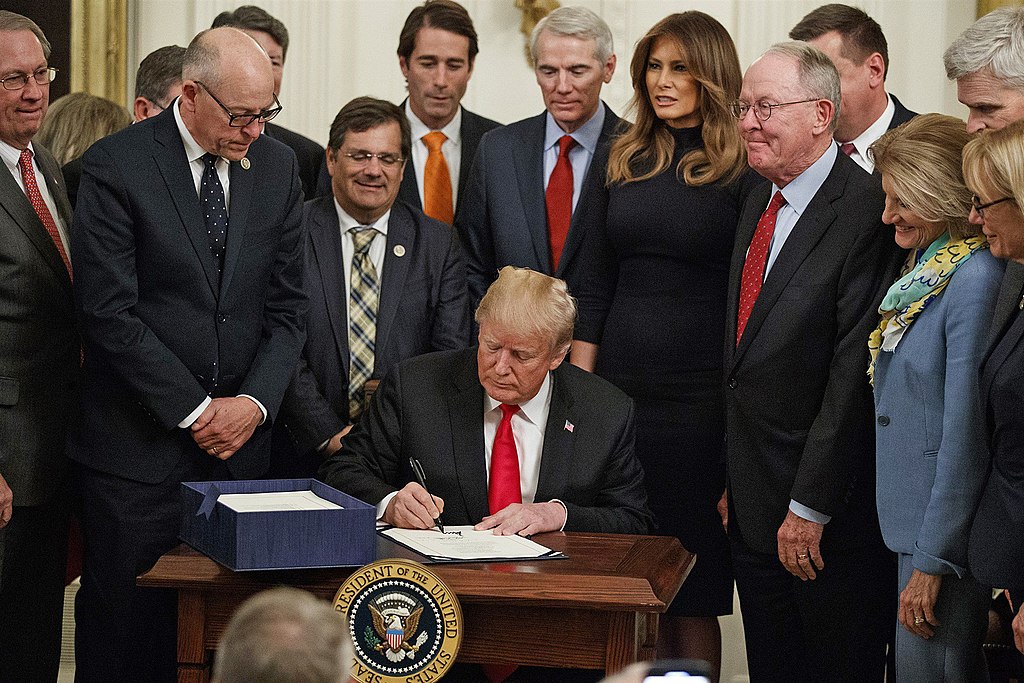Donald Trump is preparing to reenter the White House in January 2025, with inflation expected to be a top priority on his administration’s economic agenda. After years of record-breaking price hikes under President Joe Biden, Trump’s team is finalizing a comprehensive strategy aimed at reining in inflation and restoring economic stability. While his supporters applaud the plan as overdue, critics are already bracing for its controversial implications.
Focus on Energy Independence
Central to Trump’s inflation strategy is a renewed push for energy independence. Sources close to his economic advisors have revealed plans to accelerate domestic oil and natural gas production, rolling back restrictions implemented during the Biden administration. Trump’s energy-first approach aims to lower fuel costs, which have historically driven inflation across other sectors, such as transportation and food.
During his 2016 presidency, the U.S. achieved energy independence for the first time in decades, and Trump plans to replicate and expand those policies. Analysts predict this move could lead to short-term price reductions at the pump, but environmental groups are already mobilizing against potential rollbacks on green initiatives.
Tax and Regulatory Reform
The Trump administration is also expected to revisit sweeping tax cuts similar to those enacted during his first term. Insiders say tax relief for businesses and middle-income families will be a cornerstone of his economic recovery plan. By lowering corporate taxes, Trump hopes to stimulate investment and boost domestic manufacturing, reducing America’s reliance on imported goods.
In tandem, regulatory reform is expected to be fast-tracked. Trump’s advisors argue that excessive red tape has stifled business growth and innovation, which in turn drives up consumer prices. While proponents see deregulation as a way to unleash economic growth, critics argue it could erode consumer protections.
Tackling Supply Chain Bottlenecks
Another critical component of Trump’s inflation strategy involves fixing supply chain inefficiencies. The COVID-19 pandemic exposed vulnerabilities in global logistics, leading to shortages and rising costs. Trump’s team plans to incentivize companies to relocate manufacturing to the United States, focusing on critical industries such as pharmaceuticals, semiconductors, and food production.
While this approach aligns with Trump’s longstanding “America First” philosophy, it may also lead to tensions with trading partners who could face higher tariffs as a result.
Interest Rates and the Federal Reserve
Trump has previously criticized the Federal Reserve for its handling of interest rate policies, accusing it of exacerbating inflation. As part of his plan, Trump is likely to pressure the Fed into adopting a more pro-growth monetary stance. Speculation is already circulating about potential personnel changes at the Fed to align its policies with Trump’s economic vision.
A Controversial Road Ahead
Supporters of Trump’s inflation plan argue that bold action is needed to address years of economic mismanagement. However, detractors warn that aggressive deregulation, protectionist trade policies, and tax cuts could have unintended consequences, including a widening federal deficit and environmental setbacks.
As the nation prepares for Trump’s second term, his approach to tackling inflation will undoubtedly dominate political and economic discourse. With sweeping changes on the horizon, the impact of his policies on American households and businesses will be closely scrutinized.



 Taiwan Opposition Criticizes Plan to Block Chinese App Rednote Over Security Concerns
Taiwan Opposition Criticizes Plan to Block Chinese App Rednote Over Security Concerns  Cuba Reaffirms Anti-Drug Cooperation as Tensions Rise in the Caribbean
Cuba Reaffirms Anti-Drug Cooperation as Tensions Rise in the Caribbean  Oil Prices Hold Steady as Ukraine Tensions and Fed Cut Expectations Support Market
Oil Prices Hold Steady as Ukraine Tensions and Fed Cut Expectations Support Market  Trump Claims He Will Void Biden Documents Signed with Autopen
Trump Claims He Will Void Biden Documents Signed with Autopen  Trump Administration Tightens H-1B Visa Vetting With New Focus on Free Speech and Censorship
Trump Administration Tightens H-1B Visa Vetting With New Focus on Free Speech and Censorship  U.S. Defense Chief Pete Hegseth Defends Controversial Second Strike on Suspected Drug-Smuggling Vessel
U.S. Defense Chief Pete Hegseth Defends Controversial Second Strike on Suspected Drug-Smuggling Vessel  Gold Prices Steady as Markets Await Key U.S. Data and Expected Fed Rate Cut
Gold Prices Steady as Markets Await Key U.S. Data and Expected Fed Rate Cut  Israel Receives Body of Deceased Hostage as Rafah Crossing Reopening Hinges on Final Returns
Israel Receives Body of Deceased Hostage as Rafah Crossing Reopening Hinges on Final Returns  Asian Markets Mixed as Fed Rate Cut Bets Grow and Japan’s Nikkei Leads Gains
Asian Markets Mixed as Fed Rate Cut Bets Grow and Japan’s Nikkei Leads Gains  New Orleans Immigration Crackdown Sparks Fear as Federal Arrests Intensify
New Orleans Immigration Crackdown Sparks Fear as Federal Arrests Intensify  BOJ Governor Ueda Highlights Uncertainty Over Future Interest Rate Hikes
BOJ Governor Ueda Highlights Uncertainty Over Future Interest Rate Hikes  China Urged to Prioritize Economy Over Territorial Ambitions, Says Taiwan’s President Lai
China Urged to Prioritize Economy Over Territorial Ambitions, Says Taiwan’s President Lai  Australia and Japan Strengthen Defence Cooperation Amid Rising Regional Tensions
Australia and Japan Strengthen Defence Cooperation Amid Rising Regional Tensions  Honduras Election Turmoil Intensifies as Nasralla Blames Trump for Shift in Results
Honduras Election Turmoil Intensifies as Nasralla Blames Trump for Shift in Results  Trump Administration Halts Immigration, Green Card, and Citizenship Processing for 19 Countries
Trump Administration Halts Immigration, Green Card, and Citizenship Processing for 19 Countries  U.S. Expected to Expand Travel Ban to More Than 30 Countries
U.S. Expected to Expand Travel Ban to More Than 30 Countries  Asia’s IPO Market Set for Strong Growth as China and India Drive Investor Diversification
Asia’s IPO Market Set for Strong Growth as China and India Drive Investor Diversification 
































